Outdoor seating ideas – 10 dreamy designs from experts for gardens of all sizes
Kick back and relax with these outdoor seating ideas for dining, reclining and lounging in the garden
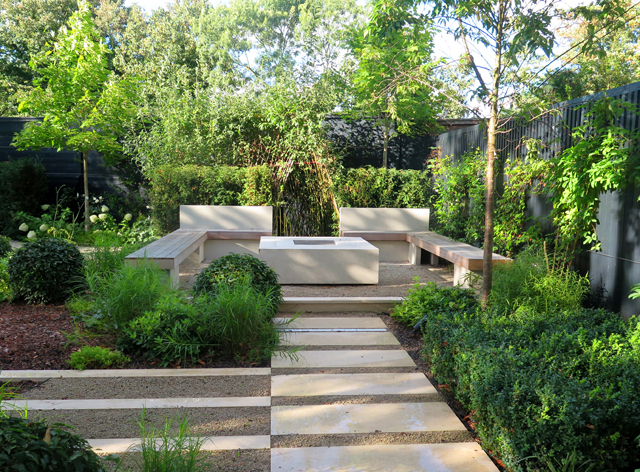
For summer, the right outdoor seating ideas will make a huge difference to the enjoyment of your garden, terrace or balcony.
Taking the time to weigh up what those seating requirements are - and how they will work as part of your backyard ideas - will lead to a laid-back summer of outdoor fun.
So where do you start? 'The first things to look at are the size of the space, how it is accessed and the orientation,' says landscape designer Charlotte Rowe. 'If you want to have somewhere to enjoy an early evening drink, then put your seating area in the best spot for that regardless as to how far down the garden. This makes it a journey and the seating area a destination.'
'Think of your available outdoor space as a room,' says James Mair, founder of design showroom Viaduct. 'Before even measuring the space, consider how it will be used and by how many. Is it just a terrace for two people, or an outside family dining area used for drinks and summer meals, or a lounge area looking over a wonderful view?'
We've curated some of the best examples of diverse outdoor seating to inspire a summer of entertaining and relaxing outdoors.
10 outdoor seating ideas to make your garden more comfortable
1. Mix modular and built-in furniture
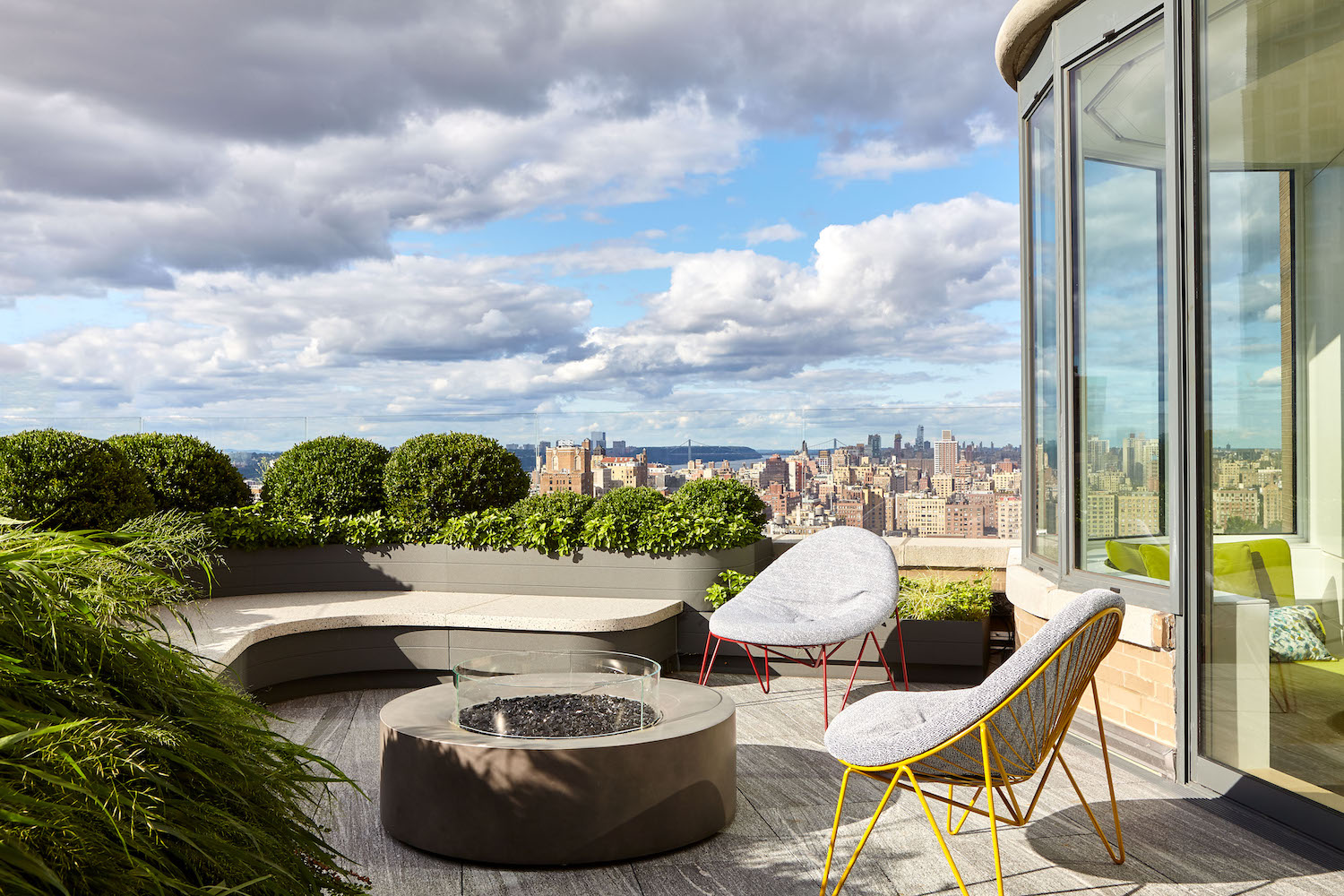
To max your space and make a small terrace feel luxurious, whilst also being easy to maintain use a combination of built-in and modular modern outdoor furniture. This project by Hollander Design is a beautiful demonstration.
'Safety is of the utmost importance when designing on a terrace. We often utilize a combination of built-in elements, such as the terrazzo-clad, cushioned banquettes, as well as flexible moveable furniture,' says Stephen Eich, Urban Studio Director at Hollander Design Landscape Architects.
'Any moveable furniture should be stackable and easily secured to an anchor point on the terrace, or heavy enough to not risk flying off. We select comfortable fabrics that dry out quickly and can be rinsed off easily without too much effort. Ultimately terraces are a retreat, and not a place that requires arduous amounts of work to maintain.'
'If you opt for a mix of built-in seating and modular furniture, make sure that the built-in furniture has the seat at the same height as the additional chairs and sofas, otherwise it will not work practically,' adds landscape designer, Charlotte Rowe. 'We tend to make our built-in seats 15-17 inches high.
'And always buy outdoor furniture which is good quality and fit for purpose. You cannot get away with buying cheap outdoor furniture if you want it to last more than two winters.'
2. Customize a retaining wall
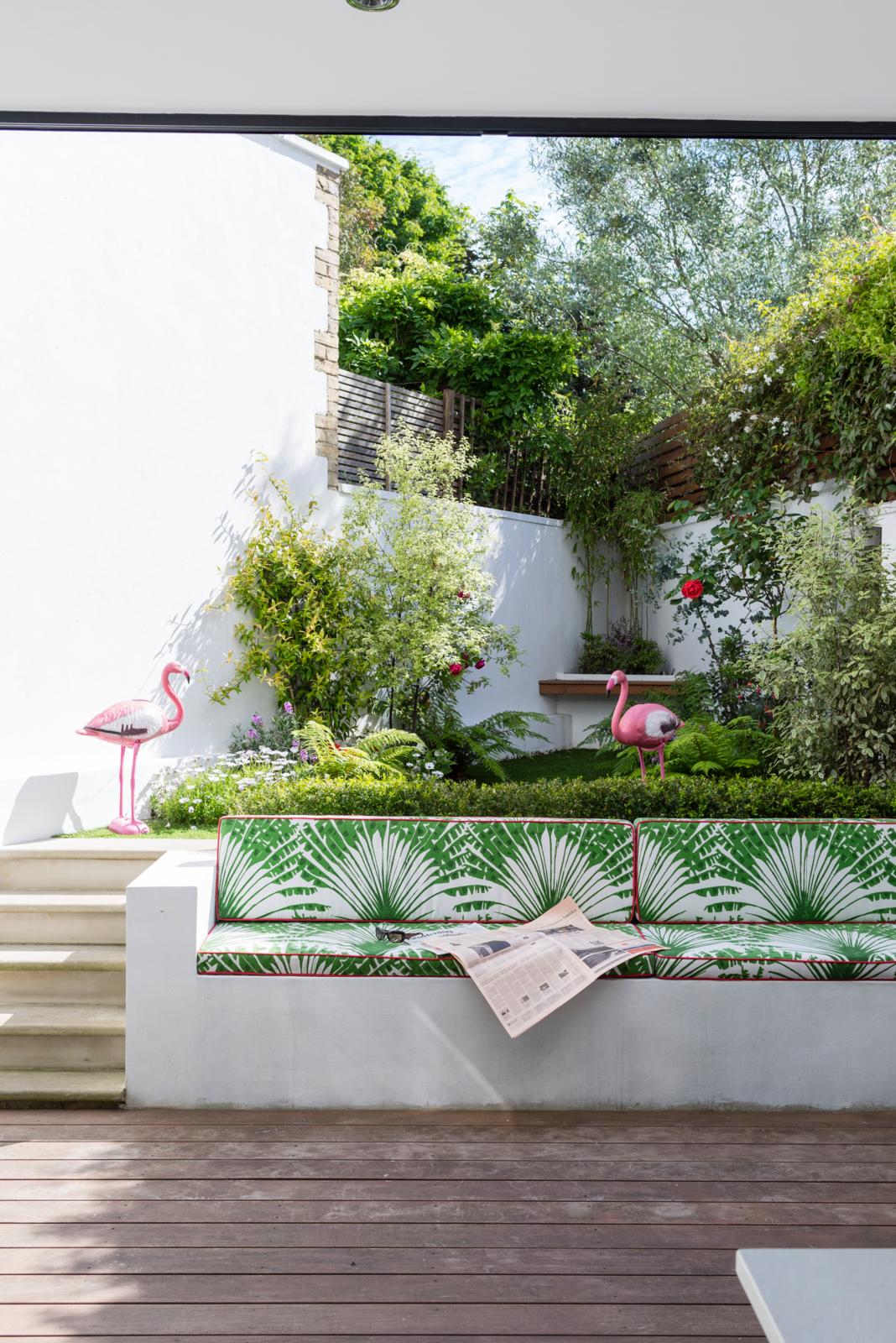
A small garden need not be a barrier to built-in seating if you're clever. Here a slither of urban outside space has been designed in receding sections – decking, seating, hedge, lawn and a raised bed – that create the illusion of depth, as if it fades into the distance.
At the same time, the white concrete retaining wall has been customized into a built-in seating area. In the winter it can be left bare, while in the summer the addition of seat pads and backrests in Palma fabric by Michael Szell at Christopher Farr, plus a couple of fun flamingos transform it into a tropical oasis for sitting or socializing.
'For small gardens, try building furniture around the perimeter of the space rather than using stand-alone elements in the center,' says garden designer Kate Gould. 'This will allow you to create integrated storage solutions for cushions and small gardening tools on the boundaries while keeping the center of the space open and more flexible.'
3. Create a low bench
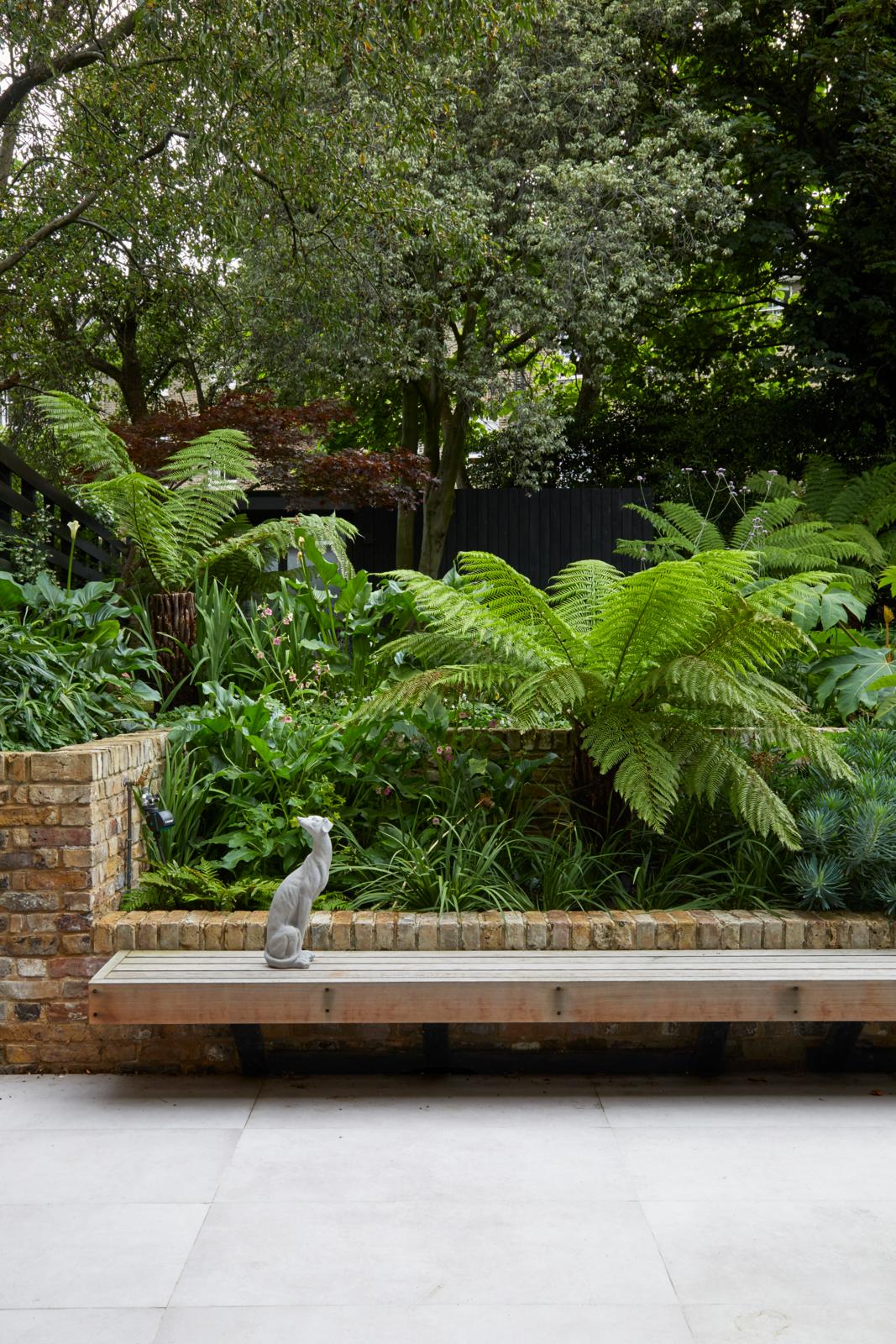
In a small garden, it's vital to utilize the space well and even a low wall can serve as somewhere to bolt a bench. In addition to your main seating or dining area, a bench like this will be an invaluable garden idea if you have a crowd around. It could also serve as somewhere for little ones to sit.
The beauty is that when it's not being used for seating it can be used as a ledge for pot plants too.
'Always use good quality materials or furniture for outside, either aluminum or stainless-steel if metal or hardwood if timber,' says Charlotte Rowe.
'When it comes to choosing patio furniture, limiting your palette so the furniture fits within a tonal range, will create a much more calming effect,' adds garden designer Kate Gould.
4. Go for a vintage style
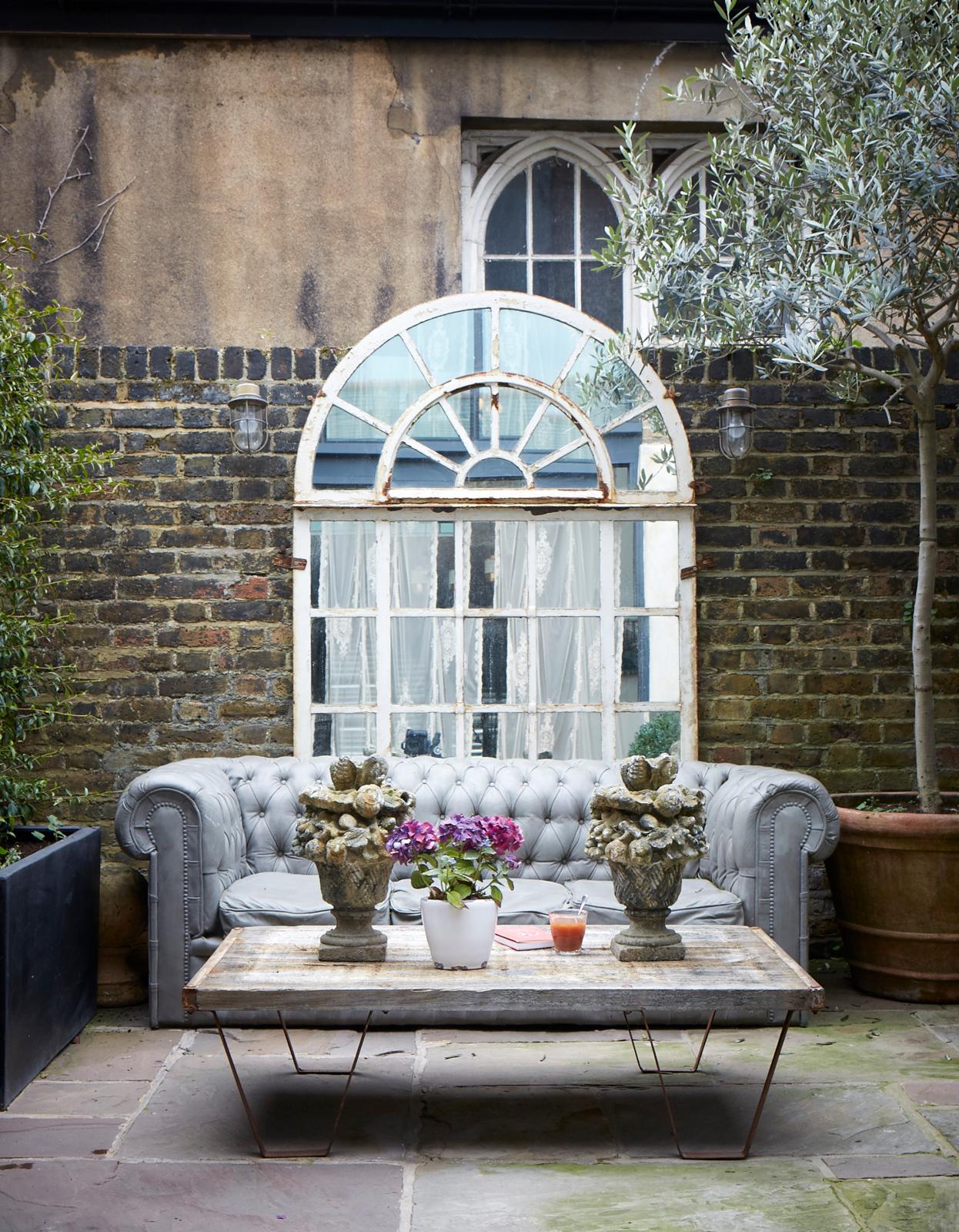
Interior designer Jo Berryman had fun with her outdoor seating by commissioning a faux Chesterfield, made by Gray Concrete. Big squashy cushions make it a comfy spot in the summer, yet once they're removed and stored away, they can withstand the elements throughout the winter. Creative garden furniture is a huge garden trend this year too.
Embellishing the space with a low coffee table and a vintage mirror makes it feel both irreverent and inviting.
'Vintage pieces, well-worn and loved, lend a patina and their aging adds to the story in a space,' says Jo.
5. Mix different materials
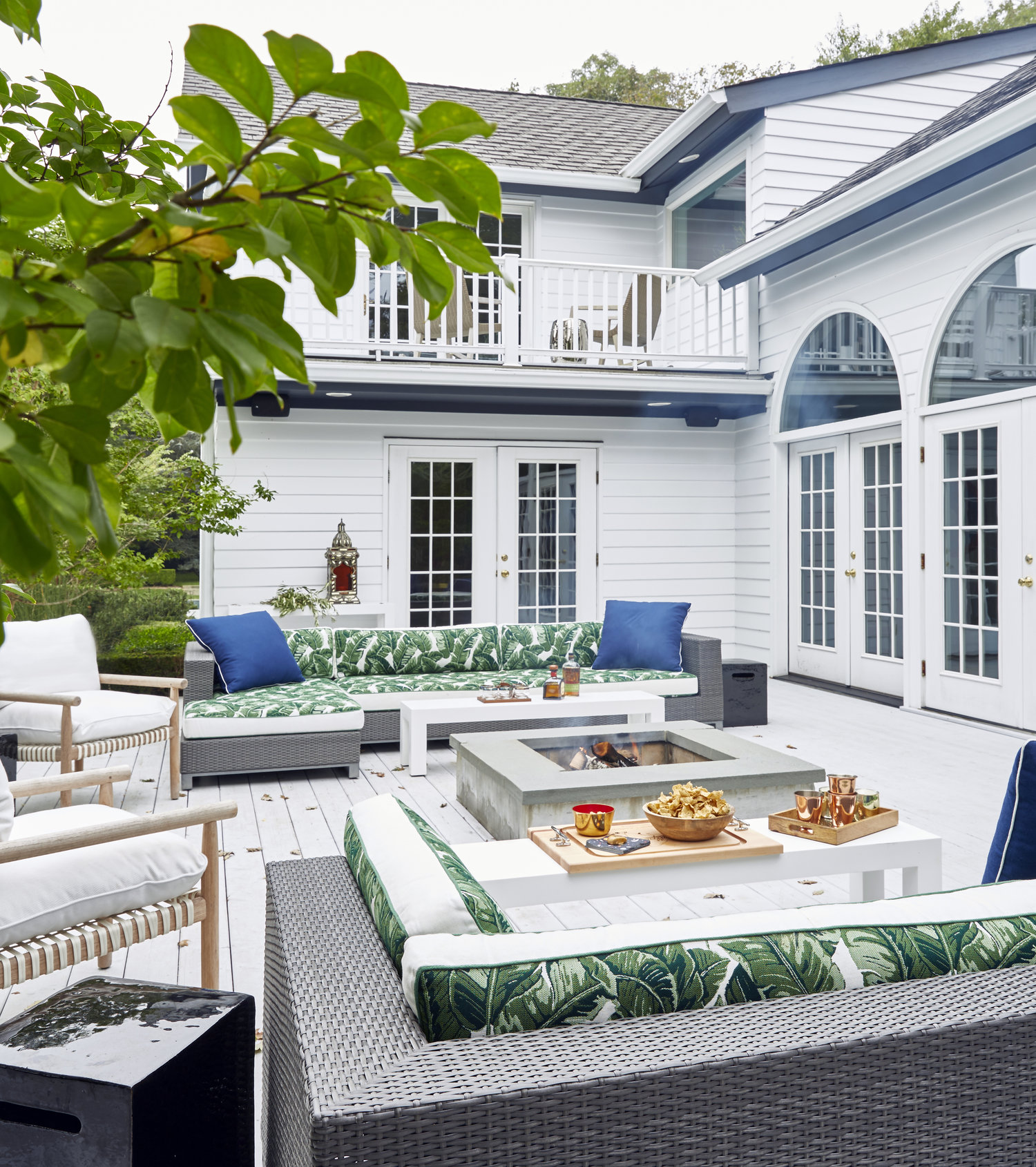
In this project by Aamir Khandwala, the interior designer selected a tranquil color palette and a mix of materials, which blends with the property's deck ideas and the abundant vegetation that surrounds it. Although the fabrics and materials look luxurious, the seating scheme has a relaxed style that's easy to maintain.
'Designing outdoor spaces is similar to interiors; proportions, comfort, functionality and durability are all important,' says Aamir.
'We love a good mix of materials, it creates depth and interest. A big consideration is to ensure the pieces can withstand the elements too. When buying furniture, all items selected should come with outdoor covers and fabrics suitable for outdoor use. It's those basic details we can sometimes forget. For those in colder regions, it's useful to have storage space during the winter months.'
6. Be bold with color
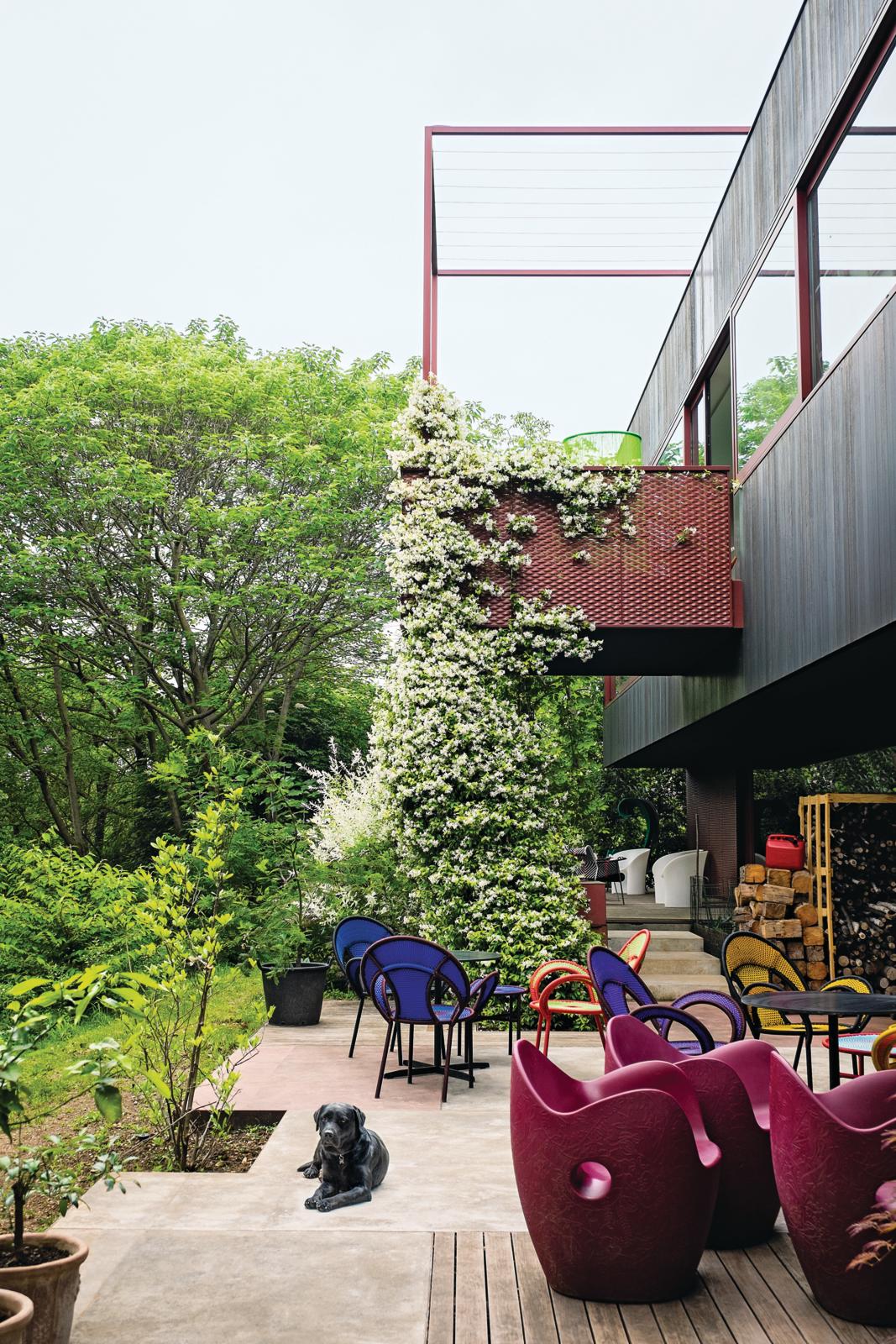
Of course, where you live will dictate your outdoor seating area to a large degree. Those in sunnier climes are less concerned with rain showers and grey cloud and more prone to better light. So if that's the case for you, let loose and be adventurous with color.
If space allows, create various groups of seating in your outdoor area. Not only does this patio idea add visual interest, but it lends itself beautifully to entertaining a crowd.
In her beautiful Italian home, Patrizia Moroso, art director of design brand Moroso, has beautifully blurred the lines between inside and out with pockets of colourful seating zones.
'This outside area blends natural and man-made beauty, Moroso style,' says Patrizia.
7. Co-ordinate tones inside and out
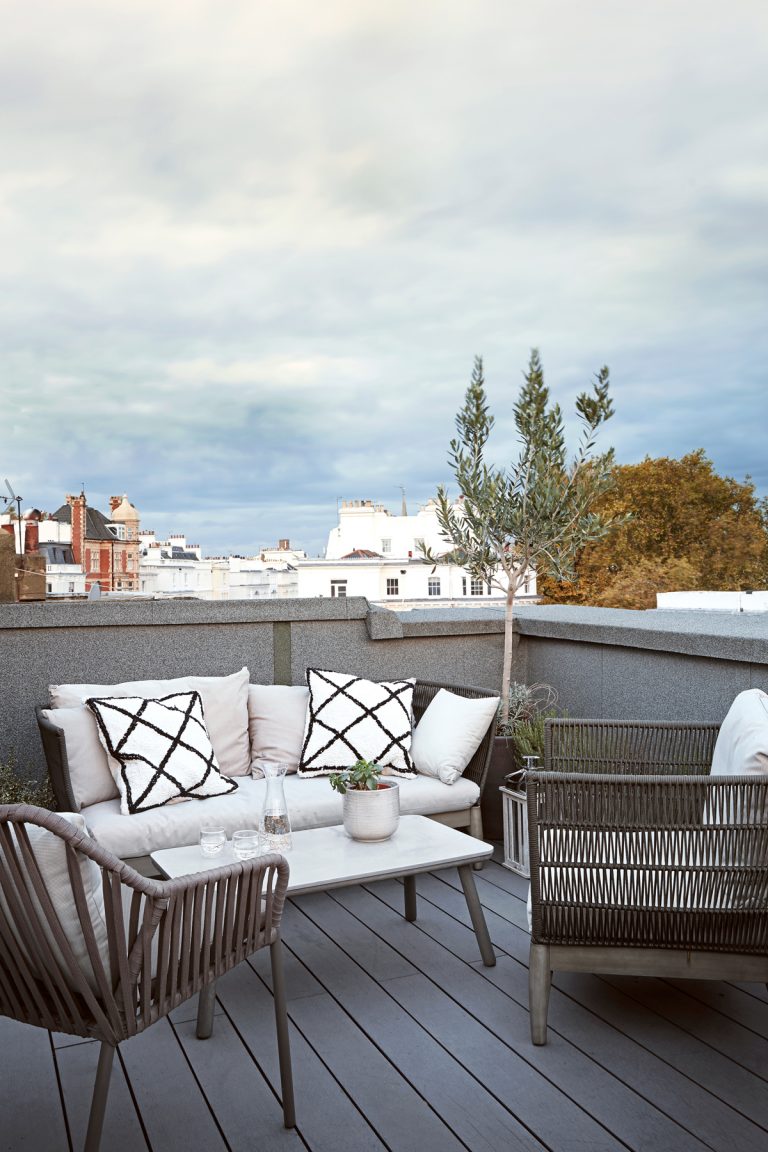
In urban apartments, where outdoor space is at a premium, it pays to really think about what you want to use it for. In this project by Amelie von Celsing at AVC Interior, the homeowners, a young couple, wanted somewhere they could relax after work.
However, the terrace garden also needed to be smart enough for entertaining, as their guests often spill out here from the living area during the summer.
Low seating in tones similar to those in the interior ensures a laid-back vibe that blends both the inside and outside spaces.
'Coordination of materials is absolutely vital to achieve an overall cohesive effect,' says garden designer Kate Gould. 'Traditionally, garden furniture is made from wood but artificial rattan is now commonly available and it does not require the same ongoing maintenance as timber. Many furniture ranges come with complimentary storage boxes to allow the seat cushions to be kept dry when not in use.'
8. Build a banquette that includes a flower bed
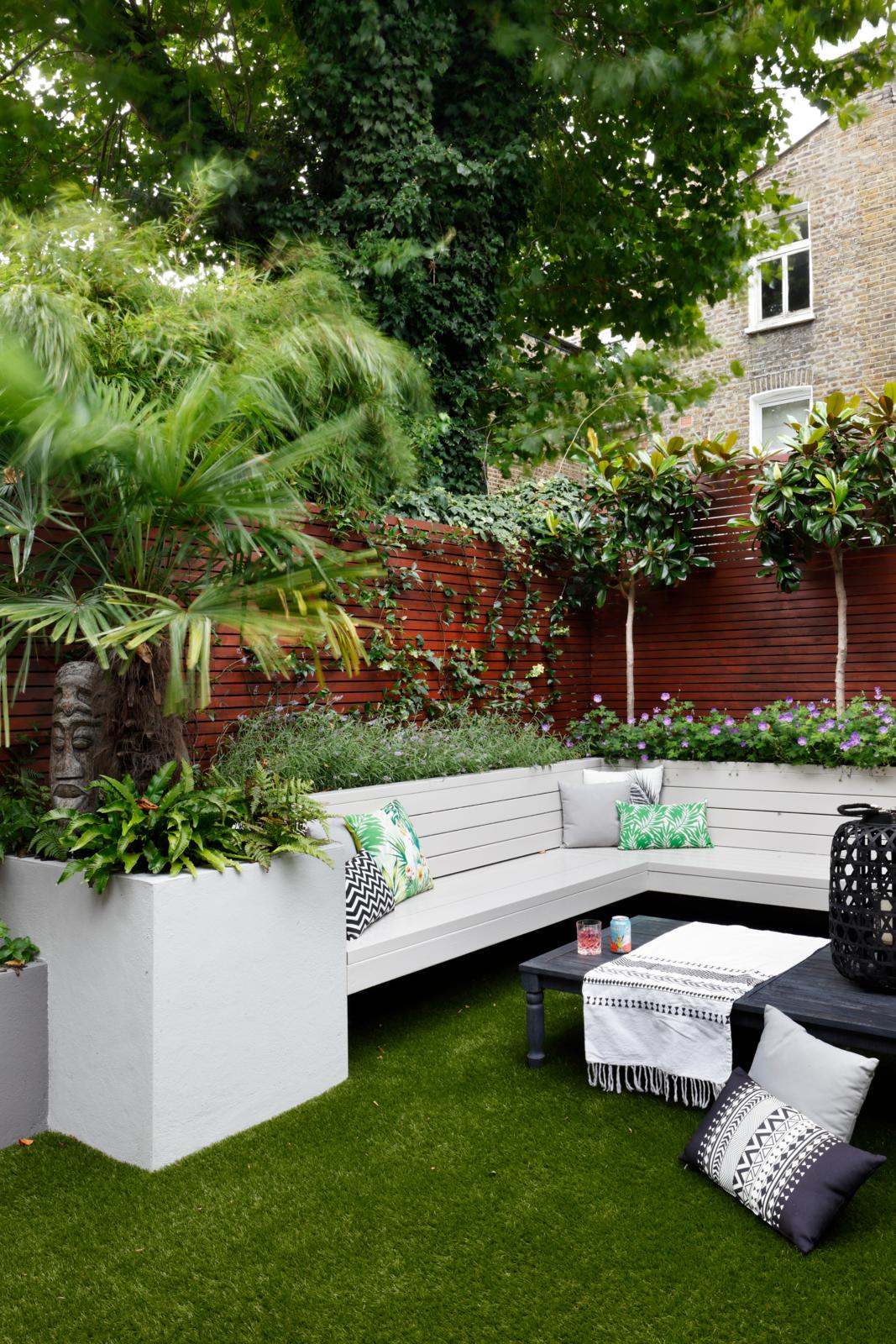
It's fun to create an 'outdoor room' filled with interior style but nature needs to thrive outside too, particularly in small, narrow gardens.
A great way to ensure your extra living space isn't at the expense of something else's is to incorporate planting in your design.
This charming banquette at the foot of the garden not only maximises space, it houses a beautiful flower bed behind. Huge planters at each end provide further space for greenery, while the slatted fence allows climbing foliage to trail over the edge.
9. Balance hard and soft surfaces

It's tempting to have your seating on a terrace next to the house. This might be convenient when you're dining but consider locating some seating in a sunny spot in another section of the garden.
'If space allows, it's lovely to plan on multiple seating areas for different moods or times of the day following the light as it moves through the space,' says garden designer, Sheila Jack.
'Give careful consideration to the balance between hard and soft surfaces. I prefer to bring an element of the planting close to the house, and place seating within the garden. Don’t just assume you need a terrace immediately adjacent to the back door. Even in a small space, you can make the garden more of an immersive space rather than just looking out at furniture and hard surfaces.
'In this urban setting I like the tension we have created between urban gardening materials like the concrete paving and a ‘meadow’ planting scheme.'
10. Choose suitable outdoor fabrics
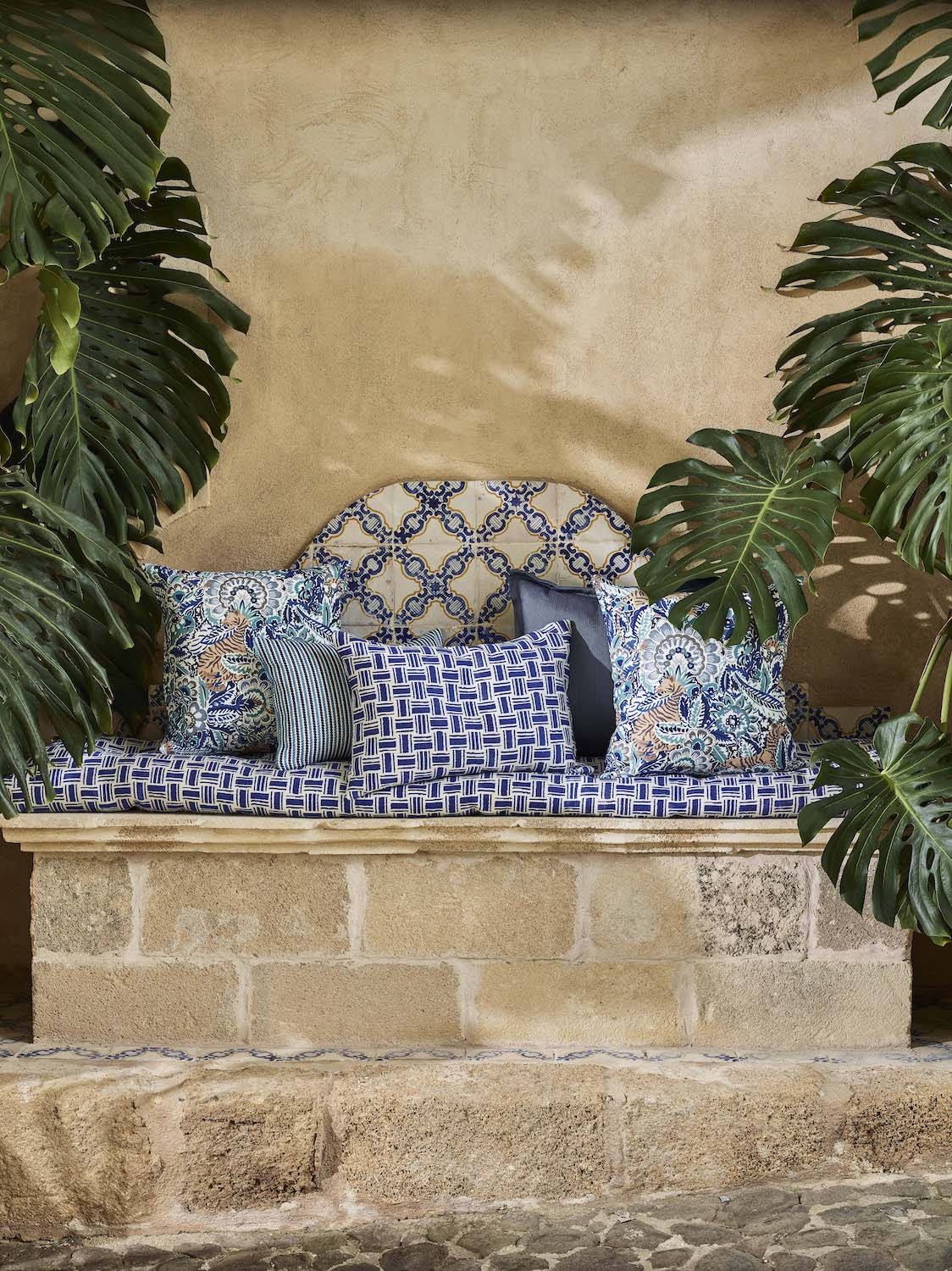
Cabana stripe, Palazzo and Arbor Stripe, the Garden Geometric collection, Liberty Fabrics
'For terraces with retaining walls, think about the best, sunniest or sheltered corner, avoiding shady garden areas, and consider permanent outdoor seating,' says James Mair, founder of Viaduct. 'Simple concrete shapes could be cast to form benches. This will look good all year round and tables and chairs added as required in summer.'
Of course, if you go for this option, you will need to ensure you have comfortable and stylish seat pads, backrests and cushions.
'Durability, light fastness, water repellency and sustainability are the key elements to look for,' says James. 'Any high-quality outdoor fabric will have ratings, so check for those.'
What can I use for outdoor seating?
'Anodized aluminum, timber and powder coated or galvanized steel will work well and last,' says James Mair, founder of Viaduct. 'Personally, I don’t recommend plastic unless it’s sustainable or recycled, and if left outside over winter it can be a pain to clean. However it can be comfortable. Metal furniture can be cold to sit on if left out during those chilly spring or autumn evenings. Natural materials will tend to age better.
'If timber furniture is being left outside all year round, then I'd only recommend hardwood. In spring, scrub it and let it dry naturally. The grey patina that develops over the years always blends well into a garden. It’s best to have timber furniture on a hard surface which drains. Otherwise if left on a lawn, the legs can rot after a few years.'
Be The First To Know
The Livingetc newsletters are your inside source for what’s shaping interiors now - and what’s next. Discover trend forecasts, smart style ideas, and curated shopping inspiration that brings design to life. Subscribe today and stay ahead of the curve.
Jacky Parker is a London-based freelance journalist and content creator, specialising in interiors, travel and food. From buying guides and real home case studies to shopping and news pages, she produces a wide range of features for national magazines and SEO content for websites
A long-time contributor to Livingetc, as a member of the team, she regularly reports on the latest trends, speaking to experts and discovering the latest tips. Jacky has also written for other publications such as Homes and Gardens, Ideal Home, Red, Grand Designs, Sunday Times Style and AD, Country Homes and Interiors and ELLE Decoration.
-
 Straight from Salone: Five Emerging Trends I Found That'll Shape Interiors For the Year Ahead
Straight from Salone: Five Emerging Trends I Found That'll Shape Interiors For the Year AheadFrom reflective silver to fluidity, here's my perspective on the key themes and new moods coming through from Milan Design Week
By Sarah Spiteri Published
-
 9 Bathroom Storage Mistakes You're Probably Making That Make Using This Space Much Harder — And What to Do Instead
9 Bathroom Storage Mistakes You're Probably Making That Make Using This Space Much Harder — And What to Do InsteadDiscover which mistakes are to blame for your overcrowded and cluttered bathroom
By Seraphina Kyprios Published